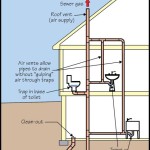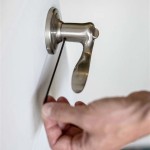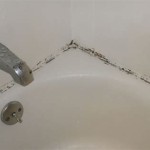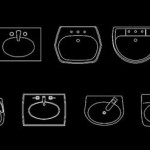What Size Waste For Bathroom Sink?
Choosing the correct waste size for a bathroom sink is crucial for proper drainage and preventing leaks. While seemingly a minor detail, an incorrectly sized waste can lead to significant plumbing issues. This article aims to provide a comprehensive understanding of bathroom sink waste sizes and factors influencing the selection process.
Understanding Bathroom Sink Waste
Bathroom sink waste refers to the system of pipes and fittings that allow water to drain from the basin. This system typically includes the drain assembly, the tailpiece, the P-trap, and the waste pipe connecting to the main drainage system. Understanding the components and their compatibility is crucial for proper installation and functionality.
Standard Bathroom Sink Waste Sizes
The most common bathroom sink waste size is 1 ¼ inches in diameter. This standard size is suitable for the majority of residential bathroom sinks. However, some sinks, particularly older models or those with unique designs, may require a 1 ½ inch waste. Always check the manufacturer's specifications to confirm the appropriate size.
Factors Influencing Waste Size Selection
Several factors influence the appropriate waste size for a specific bathroom sink. These include the sink's design, the existing plumbing infrastructure, and local plumbing codes. Neglecting these factors can lead to compatibility issues and potential leaks.
Measuring Existing Plumbing
Before purchasing a new waste, measuring the existing plumbing is essential. This step ensures compatibility and avoids the need for costly adjustments. Measure the diameter of the tailpiece and the drain opening in the sink to confirm the correct size.
Checking Manufacturer Specifications
Consulting the manufacturer's specifications is a crucial step. The manufacturer provides precise information regarding the recommended waste size and other compatible components. This information is typically found in the product manual or on the manufacturer's website.
Considering Local Plumbing Codes
Local plumbing codes may dictate specific requirements for waste sizes and installation procedures. Adhering to these codes ensures compliance and prevents potential legal issues. Consulting with a licensed plumber is advisable to ensure compliance.
Types of Bathroom Sink Wastes
Various types of bathroom sink wastes are available, each with specific features and benefits. Common types include pop-up wastes, grid wastes, and click-clack wastes. Understanding the differences between these types can aid in selecting the most suitable option for a specific bathroom design.
Pop-Up Wastes
Pop-up wastes utilize a lever located behind the faucet to open and close the drain. This mechanism allows for convenient operation and a sleek, modern aesthetic. Pop-up wastes typically come in the standard 1 ¼ inch size.
Grid Wastes
Grid wastes feature a strainer-like grid that prevents debris from entering the drain while allowing water to flow freely. These wastes are commonly found in older sinks and are available in both 1 ¼ inch and 1 ½ inch sizes.
Click-Clack Wastes
Click-clack wastes operate with a simple push-button mechanism. Pressing the stopper closes the drain, and pressing it again opens it. Click-clack wastes are increasingly popular due to their ease of use and modern appearance, typically coming in the 1 ¼ inch size.
Materials Used in Bathroom Sink Wastes
Bathroom sink wastes are typically made from materials such as brass, chrome-plated brass, or plastic. Brass offers durability and corrosion resistance, while plastic provides a more budget-friendly option. Chrome-plated brass combines the durability of brass with a polished, aesthetically pleasing finish.
Importance of Proper Installation
Proper installation of the bathroom sink waste is critical for preventing leaks and ensuring optimal drainage. Using appropriate sealant and tightening connections correctly are essential for a leak-free installation. If unsure about the installation process, consulting a qualified plumber is recommended.
Troubleshooting Common Waste Issues
Common issues with bathroom sink wastes include slow drainage, leaks, and clogs. Slow drainage may indicate a partial clog, while leaks can result from loose connections or damaged components. Clogs can be caused by hair, soap scum, or other debris. Understanding these common issues and their potential solutions can help prevent more significant plumbing problems.
Maintaining Your Bathroom Sink Waste
Regular maintenance can help prolong the life of your bathroom sink waste and prevent potential issues. Regularly cleaning the strainer or grid, removing hair and debris, and checking for leaks can help maintain optimal performance. Periodically flushing the drain with hot water can also help prevent clogs.

Slotted Or Unslotted Basin Wastes Clack Pop Up Chain Bella Bathrooms Blog

Solid 1 4 Inch Brass Pop Up Basin Waste For Sinks In Toilet Bathroom

Slotted Or Unslotted Basin Wastes Clack Pop Up Chain Bella Bathrooms Blog
-700x700.jpeg?strip=all)
1 4 Inch Pop Up Basin Waste With Overflow Hole For Sinks In Toilet Bathroom Accessories

Britton Bathrooms Slotted Basin Waste Brushed Brass Tap Warehouse

Freestanding 350mm Countertop Round White Bathroom Bowl Selva

Luxury Chrome Round Bottle Trap Tap Waste Bathroom Basin Sink Standard Size

Stainless Steel Sink Waste Coupling For Bathroom Fitting Size 3 And 4 Inch Diameter At Rs 50 Piece In Siliguri

Delta Big Size Premium Designer Ceramic Wash Basin With Waste Pipe Coupling Set 24 15 5 White Table Top In Buy

Start Basin Tap L Size With Pop Up Waste Set Chrome
Related Posts







